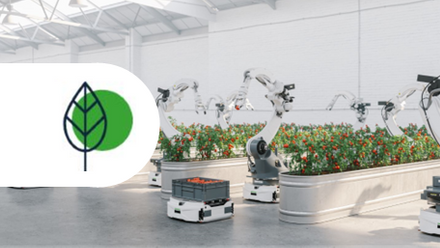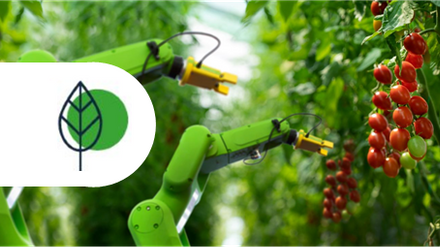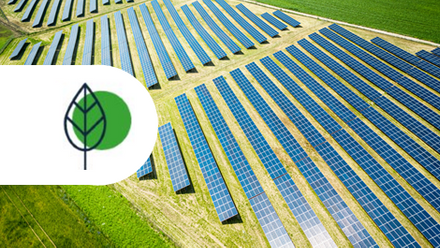Committed to Climate Action
For organisations committed to climate action and decarbonisation, techUK has highly valuable insight and experience.
We support our members and those in the broader tech sector who are committed to net zero and climate resilience and we advocate for investment in digital transformation in other sectors to help meet their net zero ambition and future resilience.
We encourage you to get in contact with our Climate team to see how we can help you.
Latest climate action news
Climate focused events
Stay up to date - sign up for our newsletter
The techUK podcast - Net zero and climate change
Commit to climate action - useful resources

Crops to Code: The role of data in fostering sustainable agricultural trade and responsible supply chains | Report with WWF
Access our report on the impact of data in driving sustainable agricultural trade and responsible supply chains. International trade underpins the global economy, fostering job creation, economic growth, and diverse goods and services.

Data Centre Energy Routemap
The UK’s challenging net zero carbon targets must be achieved without compromising security of supply or rendering UK energy consumers uncompetitive. Data centres too must balance resilience, affordability and sustainability and this routemap sets out how the sector can address these challenges whilst contributing to the UK’s low carbon future.

AI for Energy report outlines opportunities for applying AI in the energy sector
The ‘AI for Energy’ report is the first in a series of whitepapers techUK will be working with partners on over the year outlining how emerging technologies can support the net zero transition of the energy sector. Machine learning and AI are being seen crucially as a vital technology to manage the increasing complexity of the energy system as it decentralises and decarbonises. Sign in to read the report.
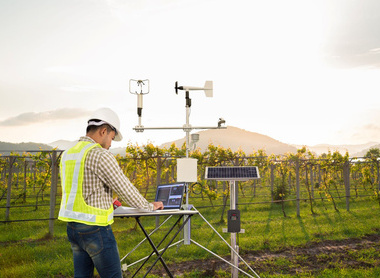
Report: Making the UK a digital clean tech leader
We are seeing the growth of a new digital tech sector, one whose focus is to cut carbon emissions and support other sectors in their transition to net zero. But digitalisation doesn’t just happen. We need to work with government to unlock the full potential of tech in helping UK businesses become smarter, more efficient and cleaner. Sign in to read the report.

The International Telecommunication Union (ITU)
The UN telecoms body published a greenhouse gas trajectory to help the ICT sector meet a 1.5 degree pathway in line with the Paris Agreement. The recommendations have the ability to fundamentally transform the digital sector’s approach to emission reduction and we recommend that members look through the documents.

Business Climate Hub
The Business Climate Hub is a UK Government backed scheme to engage firms on the need for climate action with advice, pledges, resources and help. They have a commitment to halve emissions by 2030 and meet net zero before 2050, with annual reporting in line with the Race to Zero. As net zero commitments become a must for firms of all sizes techUK supports this initiative.
Get involved with our climate action work
All techUK's work is led by our members - keep in touch or get involved by joining one of the programmes below.
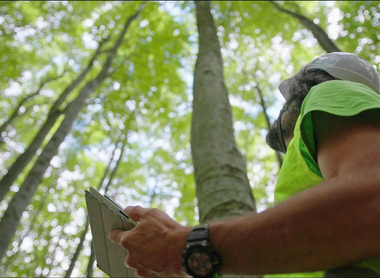
Climate, Environment and Sustainability
We believe that digital technology offers significant opportunities to support the net zero transition, climate adaptation, and a healthy and clean environment. We also recognise our own climate and environmental impact, as well as the human rights risks in the tech supply chain, and work closely with members, government, regulators and stakeholders to try and address these to realise the positive benefits of tech as we transition to more sustainable systems and business models.

Smart infrastructure and systems
Smart infrastructure allows us to capture new insights through data capture for more informed decision making, more efficient and decarbonised systems, and opens up the opportunity for new business models and new services for citizens. Through our Smart Infrastructure and Systems programme, we examine how energy, utilities, mobility and cities are embracing technology, working with government, regulators and our members to accelerate change.

Data Centres
Data centres provide the core infrastructure that underpins all digital activity across government, business and community. techUK’s award-winning programme provides a collective voice for UK operators. We work with government to improve the business environment for our members. To date we’ve saved UK operators over £150M, alerted them to business risks, mitigated regulatory impacts and raised awareness, most recently negotiating key worker status for the sector.

Financial Services
techUK's Financial Services and Payments Programme builds a greater understanding of the 'technological art of the possible' in order to apply it to the reform and evolution of the financial systems. The programme focuses on: digital banking, insurance, payments, cyber security, financial inclusion and the adoption of distributed ledger technology. The programme also represents the voice of the tech industry in the fast-evolving policy and regulatory developments affecting the sector.

Market Access
The techUK Market Access Programme helps members understand, shape, and comply with the increasingly complex array of regulations and laws that underpin international trade. We work with government officials and legal experts to help members understand and shape policy around standards, technical regulations, sanctions, trade policy and export controls, subjects tech firms need to be on top of to trade internationally.
Climate FAQs
What is the energy usage and climate impacts of the tech sector?
The total life cycle carbon footprint of the ICT sector is approximately 700 million tonnes carbon dioxide equivalent (Mt CO2e) per year. This is equivalent to 1.4% of global carbon emissions and around 4% global electricity use.
While total electricity consumption has increased by approximately 5% since 2015, the carbon emissions of the sector have dropped from around 730 Mt CO2e due to higher levels of renewable electricity use both globally and from specific investments by ICT companies.
The carbon emissions of the ICT sector cover the following:
- An estimated 170 Mt CO2e from the telco sector of which 110 Mt CO2e is from mobile networks and 60 Mt CO2e from fixed networks. This includes network equipment manufacture, construction of network exchanges and mobile masts, and the operation and maintenance of the networks
- Around 190 Mt CO2e from the manufacture of user devices such as computers, tablets, broadband routers, mobile phones, wearables and payment terminals
- An estimated 190 Mt CO2e from the use of user devices
- Approximately 130 Mt CO2e from data centres – this includes emissions from their construction and equipment manufacture as well as the operation of the data centres i.e. electricity use
- Just under 20 Mt CO2e from enterprise networks, used by organisations to connect sites in different locations to the same network and systems
The entertainment and media sector is counted separately. This covers the use of TVs, games consoles, streaming of music and video, and printed media such as newspapers. This sector accounts for an estimated further 1.1% of total CO2e and approximately 3% of global electricity consumption.
These figures exclude cryptocurrencies, such a bitcoin mining, which is estimated at 0.2% of global electricity use, and the use of surveillance cameras, which is approximately 0.15%.
This data is taken from Jens Malmodin and Dag Lundén. 2018. The Energy and Carbon Footprint of the Global ICT and E&M Sectors 2010–2015 with more recent data included to update the figures. The results are derived from an extensive collection of actual sales, electricity usage and carbon emissions of the companies in the sector.
An older but frequently cited study presents three different scenarios for the expected consumption depending on the expected technology efficiency increase. The unrealistic ‘worst case’ scenario in this study (which suggests that the ICT sector could use as much as a fifth of overall electricity by 2030) in this study has been reported in media articles, despite the report authors highlighting more likely outcomes.
What action is the tech sector taking to reduce its own emissions?
A new international standard for the ICT sector has recently been published that outlines the pathway needed to meet the commitments outlined in the Paris Agreement. These guidelines are the first targets specific to the ICT sector that have been approved by the Science-Based Targets Initiative. It requires cuts of 45% by 2030 and sets out a roadmap for meeting net zero carbon emissions by 2050.[1]
To date, more than 50 mobile operators, which together account for around two thirds of mobile connections globally – are now disclosing their climate impacts, energy and GHG emissions via the internationally recognised CDP global disclosure system. The GSMA, the mobile industry association, is working with operators to help them commit to targets aligned to the new net zero pathway for the sector.
Globally, 29 network operators representing more than 30% of global mobile connections and 50% of mobile industry revenues have committed to setting Science-Based Targets, along with 35 hardware manufacturers. To date, 28 techUK members have signed up.
A shift to renewable energy is expected to account for most of the sector’s reductions over the next decade. Companies will also achieve greater energy efficiency and deepen relationships with suppliers to drive reductions through the supply chain. The latter is vital, especially for short-lived user devices, as supply chain emissions can represent two thirds of a companies’ full footprint[2].
If the ICT industry, ICT suppliers and end users all switch to using renewable energy then the carbon footprint of the ICT sector would be cut by more than 80%[3]. The sector is already a significant buyer of renewables. ICT companies operating large data centres are leaders in corporate procurement of renewables, accounting for about half of global procurement of renewables in recent years (IEA) and driving renewable deployment across the world through Power Purchasing Agreements (PPAs). The top six off-takers of renewables in 2019 were all ICT companies, led by Google.[4]
Other activities to decarbonise the sector include investing in energy efficient networks, virtualisation of networks, deploying energy conservation measures, and utilising free cooling.
Significant investment and R&D programmes are also in place covering energy technologies, battery innovation, energy efficiency, network efficiency, eco-design of products, re-use of equipment, repairing and recycling, climate-tech (covering agriculture, supply chains, buildings, energy, industry and cities) and climate and environment data analytic tools and platforms.
[1] ITU Press release (27/02/2020): ICT industry to reduce greenhouse gas emissions by 45 per cent by 2030 https://www.itu.int/en/mediacentre/Pages/PR04-2020-ICT-industry-to-reduce-greenhouse-gas-emissions-by-45-percent-by-2030.aspx
[2] CDP (2019) Changing the Chain: making environmental action the new normal https://6fefcbb86e61af1b2fc4-c70d8ead6ced550b4d987d7c03fcdd1d.ssl.cf3.rackcdn.com/cms/reports/documents/000/004/811/original/CDP_Supply_Chain_Report_Changing_the_Chain.pdf?1575882630
[3] Ericsson (2020) A quick guide to your digital footprint https://www.ericsson.com/en/reports-and-papers/industrylab/reports/a-quick-guide-to-your-digital-carbon-footprint
[4] BNEF Press release (28/01/2020) Corporate Clean Energy Buying Leapt 44% in 2019, Sets New Record https://about.bnef.com/blog/corporate-clean-energy-buying-leapt-44-in-2019-sets-new-record/
Will 5G mean more energy/climate will be consumed by the sector?
Although 5G networks are likely to drive a dramatic increase in mobile traffic, they are also designed to be more energy efficient than their predecessors. Crucially, 5G and related technologies give mobile operators precise control over their networks’ performance and, by extension, energy consumption. Operators have taken the opportunity of 5G’s introduction to rethink how to build, operate and manage networks in a smarter and more strategic way.
Mobile operators will increasingly be able to use network function virtualisation, software-defined networks and network slicing to tailor the connectivity to the needs of the application. That will mean less energy is wasted. Although 5G is likely to drive a massive expansion in the number of ‘things’ connected, many of these connections will consume very little energy. For example, some NB-IoT connected devices will be able to function for a decade using a single battery.
5G networks will be much denser than their predecessors, employing more base stations and other infrastructure. Moreover, many mobile operators will run 2G, 3G, 4G and 5G networks in tandem for much of the next decade, placing upward pressure on their energy usage before they are able to realise savings by decommissioning legacy networks.
However, some operators have decided to decommission both 2G and 3G networks, not the least due to reuse of frequencies, and by that a higher degree of energy efficiency will be achieved.
In addition, mobile broadband solutions such as Fixed Wireless Access (FWA) will replace older xDSL copper based broadband networks, especially in rural areas, delivering greater energy efficiency as well as future proof broadband access network with significantly lower environmental impact due to copper network maintenance.
Energy efficiency is important to the mobile subsector and ICT sector because electricity costs are a significant overhead, so network operators work closely with equipment manufacturers on energy efficiency. 5G and related technologies give mobile operators precise control over their networks’ performance and, by extension, energy consumption.
Will the growing use of data require a corresponding increase in energy use?
Rapid digitalisation and ongoing increases in data traffic presents significant opportunities to support the system changes needed to transition to ultra-low carbon economies from more accurate climate modelling and energy services to supporting smarter cities and home working. However, the growth in data raises questions around how the carbon footprint of ICT could change in the future, particularly with the building of larger data centres and the launch of new communications networks. The best starting point for understanding the future is to analyse historical developments, evaluating real-world measurements of electricity consumption and data traffic in light of expected future developments.
Looking at actual data from recent years, the electricity consumption and carbon footprint of the ICT sector does not follow the same trends as data traffic. Since 2010, total data traffic has increased approximately tenfold, while electricity consumption for the ICT sector has increased by less than 10%.
Looking specifically at data centres, studies show that while computing output from data centres went up six-fold from 2010 to 2018 electricity use increased up 6%.
In addition, energy efficiency improvements across the sector, the transition to renewable energy, together with replacing larger devices with smartphones, continues to limit ICT’s footprint, despite the ongoing build-out of networks and rising subscriber numbers.
Looking ahead, it is likely that data traffic will continue to rise exponentially, but that ICT’s carbon footprint and electricity consumption will not follow, due to continued developments in efficiency and the phasing out of older networks and access technologies paired with increased usage of renewables.
Arguments that the ICT industry will consume most of the world’s electricity within a couple of decades are, therefore, unreasonable (as well as far too expensive to support).
Why can’t smartphones be repaired or last longer?
In the UK, users tend to retain mobile phones for two years before replacing them. This reflects mobile phone contracts that run for two years before users are offered an opportunity to upgrade their phones. Recently this has been challenged by ‘SIM-only’ contracts and consumer reluctance to accept long binding periods.
However, the lifespan of a mobile phone can be as long as eight years. After upgrade, around 8% of handsets are either sold or returned and enter a vibrant second-hand market. The remainder are likely hoarded at home or gifted to friends and family.
Manufacturers are motivated to ensure mobiles are repairable and durable to minimise warranty costs. The focus has been primarily on preventing dust ingress and water damage, underpinned by international standards.
Other circular economy models have been explored. Some OEMs have begun to focus on increasing, retaining or recovering a product’s value, either by extending longevity and/or facilitating take back, repair, refurbishment, and resale. This in turn is leading to partnerships across the value chain or establishing their own in-house repair and refurbishment services.
The European Commission is currently exploring what eco-design measures can be introduced to further support phone’s longevity and has recently announced plans to introduce an EU-wide take back scheme. UK is also considering options as part of its approach to extended producer responsibility. Indeed, improving a products’ ability to repair and upgrade and its durability is a big focus of current EU and UK efforts on product design. Last year, for example, it introduced new rules requiring manufacturers of certain products to ensure spare parts are available for seven years and to provide repair information to professional repairers. It is also expected to introduce a new ‘right to repair’ in consumer law.
Isn’t the tech sector just investing in renewables to offset its impact?
Yes, the sector is seeking to offset its impact: and it is a trend that has positive system-wide benefits.
ICT companies are major investors in renewable energy and hold themselves strongly to the principle of additionality; enabling the development of renewable energy projects that would not have occurred without company’s commitment to by the off-taker for the project. This purchasing has also helped scale renewable energy, which has reduced the costs of renewable energy, developed new markets for renewables, and expanded renewable energy into regions that might have lagged without corporate purchasing pressure.
This trend has now spread into other sectors, but ICT remain a key player in the market. Data centre developers and network operators are increasingly sourcing renewable electricity, like wind or solar, with some making long-term contracts (PPAs) with developers to build power plants that otherwise would not be built. Companies also buy renewable electricity on the market by purchasing Renewable Energy Guarantee of Origin certificates to match their energy demand.
The top six corporate ‘off-takers’ of renewables in 2018 were all ICT companies; the sector is the largest global purchaser of Power Purchase Agreements (PPAs); and was by far the largest investor / purchaser of renewable electricity.
In a study of global telecom operator energy and carbon footprint performance for the period of 2010 – 2015 the share of renewable electricity reached about 46%. A later, not yet published ETNO study for the period 2015 – 2018 focusing on EU based telecom operators, calculated that the share of renewable electricity was about 74%.
In the case of PPAs, which are common in places like the USA, the renewable energy power plants are sized to generate at least as much electricity as the data centre would use over the course of a year, and in that annual sense, they are powering their data centres using clean electricity. In the UK, there is potential to consider how to unlock the PPA market, so PPAs are more accessible to companies that are keen to invest in them.
However, in any particular hour, the data centre or network operator might be drawing more or less power than the wind or solar facility is generating that hour, and accounting for that real time variation is the next step for renewable electricity use by data centres.
As energy storage becomes more common and renewable electricity generation becomes more widespread, this challenge will get easier. It may also unlock a role for data centres in demand side energy management. ICT companies are well equipped to participate in this new emerging market, because they are already familiar with combining digitalisation, back-up power and uninterrupted power supply. Data centres can play an important role in dynamic power systems that balance supplies of electricity from generators with demand from users.Why is there such a range in predictions of techs' carbon footprint and future impact?
In several articles and papers, the assumed annual growth of the sector’s carbon footprint has been described as high and increasing, mostly based on the assumption that the sector’s carbon footprint and energy consumption is growing in line with exponential data increase. Estimates like these are usually based on limited and/or uncertain data, often of a certain age, that, overstates ICT’s footprint.
There are other complexities that make numbers hard to derive and compare studies in this area, which include:
- Data: Being one of the most dynamic sectors in the world, ‘best before’ dates for data, not least intensities, are short. In general, while publication year of a study is often mentioned readers need to understand the age of the data as data is usually older. To understand the electricity use of internet services, it is important to have accurate estimates for the average electricity intensity of transmitting data through the internet (measured as kilowatt-hours per gigabyte – kWh/GB) and how it develops over time. The electricity intensity of data transmission (core and fixed-line access networks) has decreased by half approximately every 2 years since 2000 in developed countries. And a similar approach needs to be taken when referring to device studies that origins from 2012 and earlier. It’s not only the “internet core” that has gained from extremely increased energy efficiency performances the last decade, handheld devices have also seen a similar development resulting in much lower energy footprint per bit than before.
- Forecasts vs data reviews: Often the types of studies being compared use very different methodologies. Some may be based on academic models while others gather available data from around the world to analyse global trends. While the latter is more time consuming, it is more reflective of the status quo. The former, while helpful in estimating future emissions is based on a range of assumptions and have historically over-inflated the growth of carbon emissions that the sector will be responsible for.
- Boundary issues: Looking at the sector boundaries, ICT is defined to include devices like computers, phones and tablets, regardless of activity, but excludes entertainment and media devices like TVs and gaming consoles. Moving forward, new complexities arise, such as the increasing number of surveillance cameras, and the advent of smart meters and cryptocurrencies, which do not fit clearly into existing industry sector definitions. Another boundary complexity lies within the definition of a footprint which includes not only use but also materials acquisition, manufacturing, transports and end-of-life treatment.
- Electricity usage: Efficient energy use is complex to model as it depends on many parameters such as user profiles, temperature impacts, power supply efficiencies, sleep modes, and many design parameters which all impact the development of the future footprint which makes it hard to scale from the overall development from just one parameter. Assumptions on electricity grid factors (the carbon intensity of the grid) are also an issue. Some studies when projecting forward assume a constant global average electricity grid factor. In practice, grid factors vary significantly by geography, are expected to decrease rapidly, and an increasing number of data centre and telecoms network operators are switching to renewable electricity.
Therefore, in-depth studies and extensive data sets using large samples of measured data are needed to create a better understanding of the sector. Further, these need to be repeated relatively frequently. Until now there has been only a few studies published that are based on actual data and trends and not only modelling, and these studies tells a very different story compared to the extreme figures that are often mentioned.

Reaching net zero is an imperative for tech companies and 2024 will see those without ambitious climate targets lose out on opportunities and be considered less investable. We have developed this climate action hub to help members of all shapes and sizes understand what net zero means for them and what they need to do in the short, medium and long term. Throughout the year we’ll be running a campaign to help overcome the barriers members face in becoming decarbonised businesses and we urge all members to join Race to Zero and get involved with our climate change work.
For more information please contact one of our team below:



